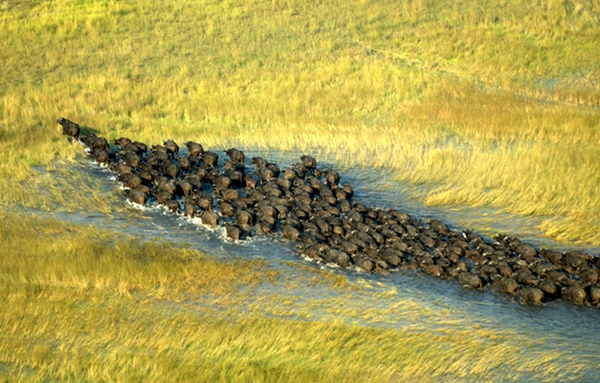HAVE ANY QUESTIONS? CLICK HERE
Okavango Delta

OKAVANGO DELTA
The Okavango Delta (World Heritage Site) is known as the Oasis in the Kalahari Desert. It is known for its crystal clear, fast flowing channels of water, tunnelling their way through papyrus, reeds and tall swampy grasses, dotted with water lilies. It has lagoons formed within as well as inundated islands both offer habitats to submerged life e.g., hippos, crocodiles, aquatic plants, fish, aquatic invertebrates, mollusks, crustaceans, bacteria and algae, almost bursting with energy that flows from one creature to another in a continuous cycle of life. With its source from the highlands of southern Angola, it is situated in the north western part of Botswana.
History: This river system was once part of the Proto-Limpopo River system that included Kwando, Zambezi, Okavango rivers flowing through Botswana into the Limpopo through Motloutse river down to the sea (Indian Ocean). These river systems were blocked by geological events called Zimbabwe-Kalahari Axis (An up-warping event) which restricted the flow to the sea. The event caused rivers to fill the central part of the Kalahari Basin, forming a large super lake called Ancient Lake Makgadikgadi known today as Makgadikgadi Salt Pan. The river system was diverted easterly by a geological fault called the Great Rift Valley running south westerly from East Africa and end in the Kalahari Sands where the Okavango River is today. The fault line diverted the river and were flowing one direction(eastwards) forming Victoria Falls on the process. This is the only largest drainage system that we know today in the region flowing to the sea through Victoria Falls. This diversion of the river systems left the super lake with no drainage supply that led to its drying up forming one of the largest salt pans in the world namely Makgadikgadi salt pans (Sowa and Ntwetwe pans).
Environmental Importance: The Okavango Delta marks one of the most important Ramsar Sites for its nature. It has a wide diversity of landscapes hosting a diverse type of life forms from mammal life, Birds, plants, fish, insects and so forth. This has been declared a World Heritage Site for its importance. Its full capacity is about 18 000 kilometers squared receiving about 11-15 Billion cubic meters of rain water annually.

